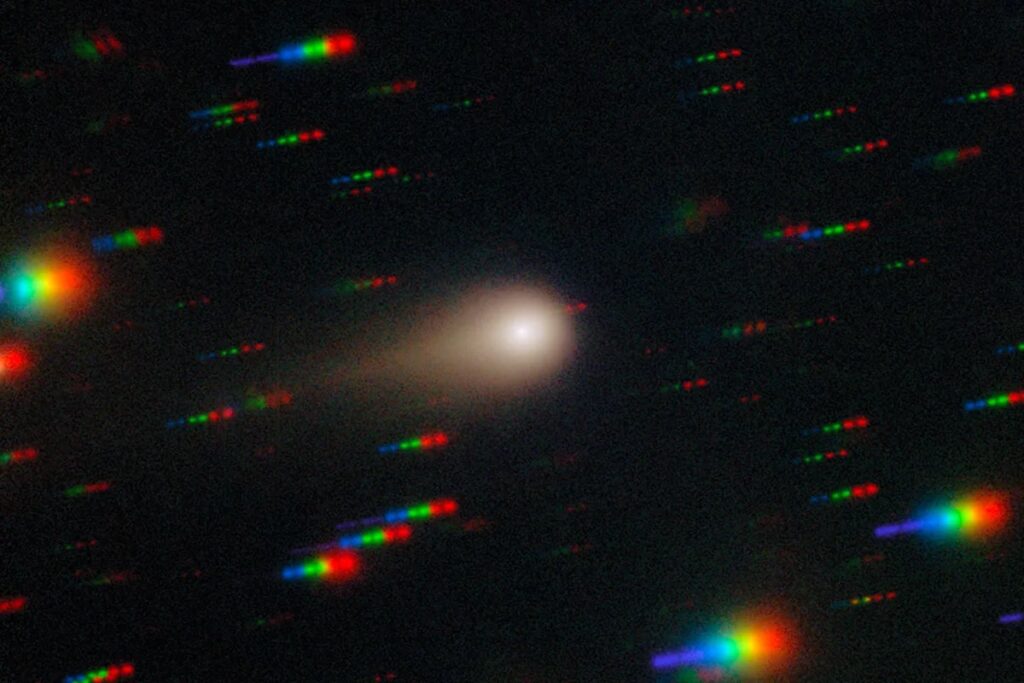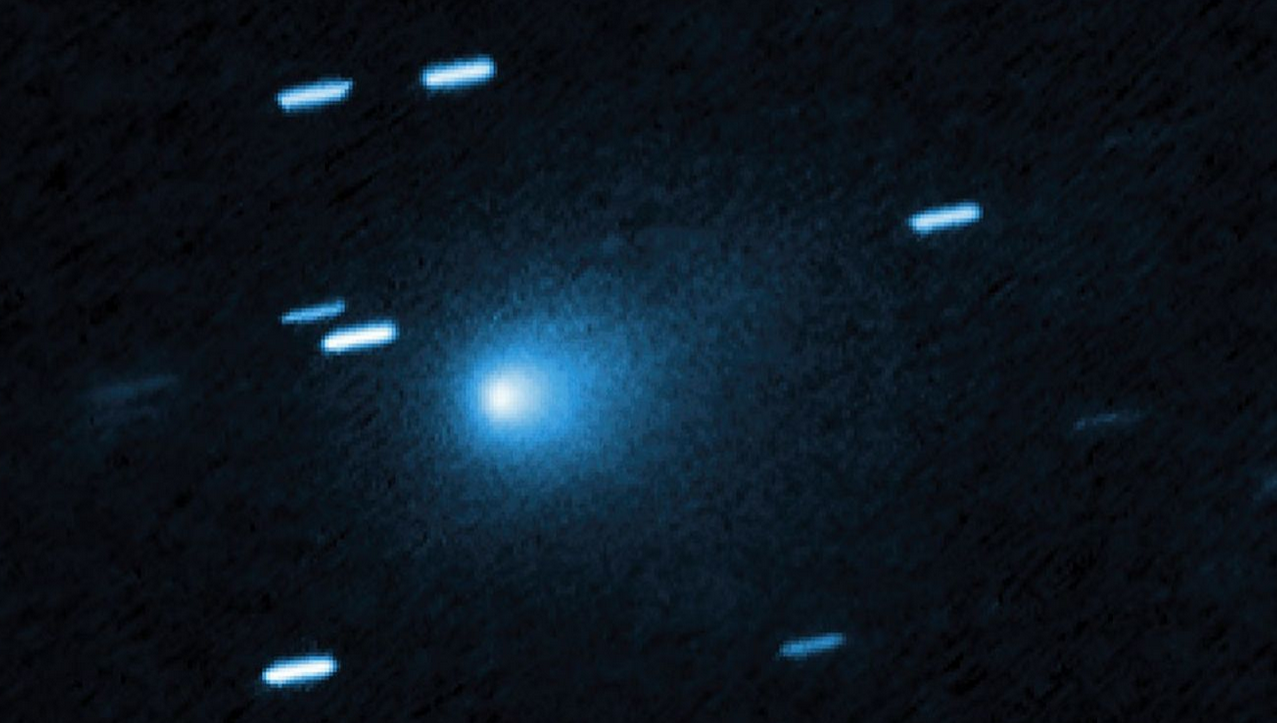Later this month, an interstellar comet will pass through our celestial neighborhood.
Dr. Ron Wilhelm, professor and astrophysicist of the University of Kentucky’s Department of Physics and Astronomy, recently shared on Campus Voices that the comet is theorized to predate the formation of the sun by billions of years, offering astronomers a rare chance to study the distant past.
Discovered by NASA this summer, 3I/ATLAS is only the third known interstellar object to pass through our solar system, and its likely hails from an ancient stellar population.
“What’s really interesting about this comet is that it’s not part of our solar system,” said Wilhelm. “Because we can measure the orbit, we can see how it’s coming in. And there’s a pretty high probability that it didn’t come from the disc part of our galaxy – it actually came from the more ancient population that lives above the disc of our galaxy.”
Wilhelm explained a disc galaxy resembles a Frisbee or plate. It’s where most of a galaxy’s stars are, as well as the gas and dust that form them. But before our solar system was formed in the Milky Way’s disc, there used to be a different population of stars, unconfined to the shape of the galaxy we know today.
“It’s very rare that we can, up close, observe something that’s not part of our solar system.”
“I’m talking 10 billion years ago or something,” said Wilhelm. “They don’t move in the disc of the galaxy, they orbit differently because they formed in a different location, and this comet seems to be coming from that population of stars. So that’s really, really interesting because we not only have an interstellar probe, which means it didn’t form in our solar system, but it also isn’t like all the stars we see normally in the sky. It’s probably coming from a very ancient star system. So, not only is it an interstellar visitor, but it may have come from a solar system that’s billions of years older than ours.”
Wilhelm said Comet 3I/ATLAS provides an opportunity to probe what the universe was like billions of years before the sun formed. The comet will make its closest approach to the sun later this month. However, its visibility will be low – it’s going to be on the other side of the sun as it comes into the solar system. Fortunately, Mars will also be on the dark side of the sun during its orbit, and researchers at NASA are planning to use its proximity to their advantage, turning existing probes and satellites in orbit around the planet toward the comet to get measurements.
This kind of observation is an excellent opportunity for research, according to Wilhelm. “It’s very rare that we can, up close, observe and analyze something that’s not part of our solar system,” he said, “so we can learn a lot from that.”
3I/ATLAS will reappear on the other side of the sun by early December of this year, allowing for renewed observations and more research from astrophysicists like Wilhelm. At that point, it will also be able to be detected by ground telescopes like the one at UK’s MacAdam Student Observatory.
Wilhelm referenced a Harvard professor, Avi Loeb, who has posited that 3I/ATLAS is actually an interstellar spaceship. However, he believes the probability of this is very low. Namely, because it resembles a comet in every way something can. The BBC reports the identified flying object has all the tell-tale features of a true comet: a signature glow and sweeping tail, formed by frozen water, carbon dioxide, and ammonia sublimating as it nears the sun.

Wilhelm predicted that up to a few times a year, astronomers will discover new objects passing through that aren’t part of our solar system.
“It may be happening all the time,” he said. “It probably is happening all the time. We only catch the bright ones.”
He explained when the light from something in space reaches the naked eye, it’s the same light from millions of years ago.
“For example, when you look at something like the Andromeda Galaxy,” Wilhelm said, “you’re actually seeing the light that left the galaxy two and a half million years ago.”
The BBC’s “Sky at Night” magazine likens this to looking back in time. Once 3I/ATLAS emerges from the dark side of the sun, it will offer a rare look at an ancient corner of the galaxy and a valuable window into the past and the future.
Listen to Dr. Wilhelm’s Campus Voices episode here, aired September 30, 2025:

